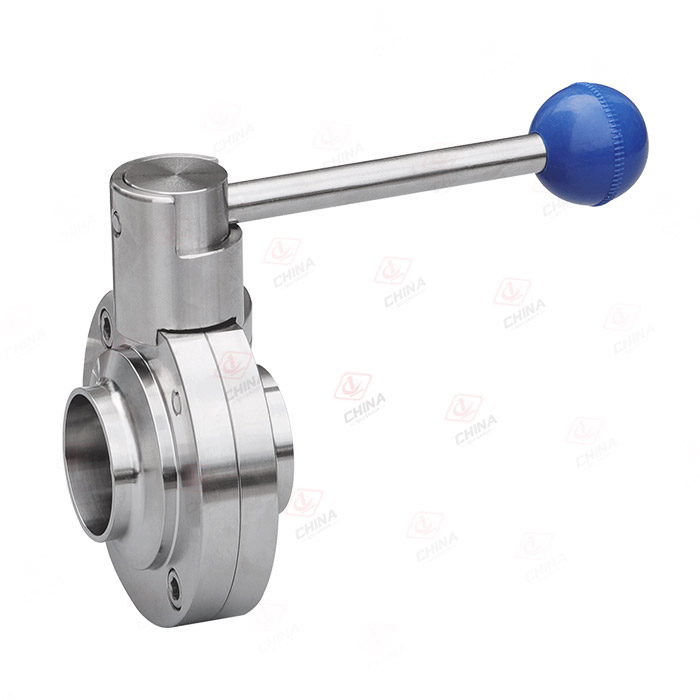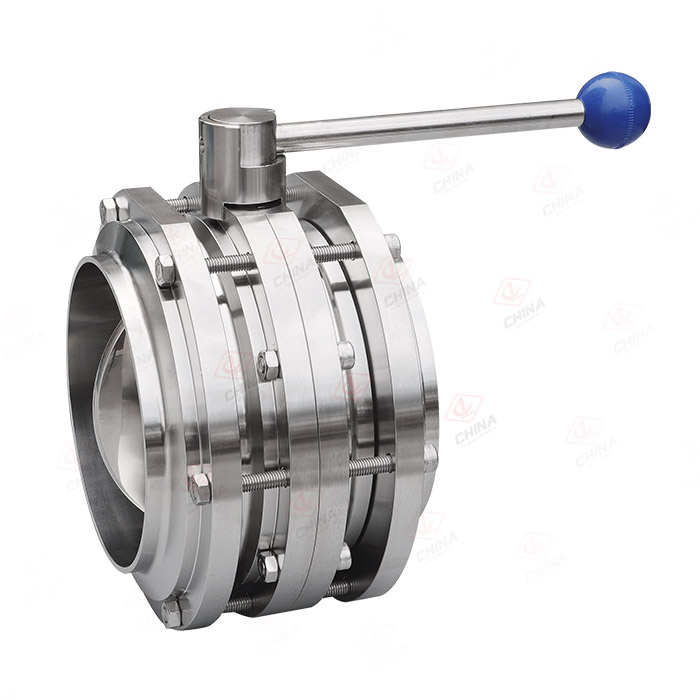News
The connection method of sanitary butterfly valve pipe fittings has many advantages, which are mainly reflected in the convenience of installation, sealing performance, applicability and maintenance and cleaning. The following is a detailed elaboration of these advantages:


Easy installation:
The Clamp Connection, Tri-Clamp Connection and sanitary quick-installation connection and other methods enable the sanitary butterfly valve to be quickly connected or disconnected to the pipeline without complex tools or steps.
The design of these connection methods makes the installation process more convenient and improves work efficiency.
Excellent sealing performance:
Whether it is clamp connection, flange connection or welding connection, sanitary butterfly valves can provide reliable sealing performance.
Especially the clamp and three-clamp connection methods, through the use of sealing rings, ensure a tight connection between the valve and the pipeline, preventing fluid leakage.
Wide applicability:
Sanitary butterfly valves have various connection methods, which can meet the needs of different industries and application scenarios.
For instance, in industries such as food, brewing, beverages, and dairy products, clamp connection and three-clamp connection methods are highly favored due to their easy cleaning and disinfection features, as they require frequent disassembly and cleaning.
In high-pressure and high-temperature environments, flange connections and welded connections are more applicable due to their excellent sealing performance and pressure resistance.
Easy to maintain and clean:
The seamless design of the clamp connection and three-clamp connection methods makes the connection part between the valve and the pipeline easy to clean and disinfect.
This is crucial for industries that require high hygiene standards, helping to reduce pollution sources and the risk of cross-contamination.
Comply with food hygiene standards:
The materials used in the connection methods of sanitary butterfly valve fittings (such as acid-resistant stainless steel, food-grade silicone rubber or polytetrafluoroethylene, etc.) all comply with food hygiene standards.
This ensures that the valve will not contaminate the product when it comes into contact with food or beverages.
In conclusion, the connection method of sanitary butterfly valve fittings has the advantages of convenient installation, excellent sealing performance, wide applicability, easy maintenance and cleaning, as well as compliance with food hygiene standards. These advantages have enabled sanitary butterfly valves to be widely applied in industries such as food, pharmaceuticals, and chemicals.




